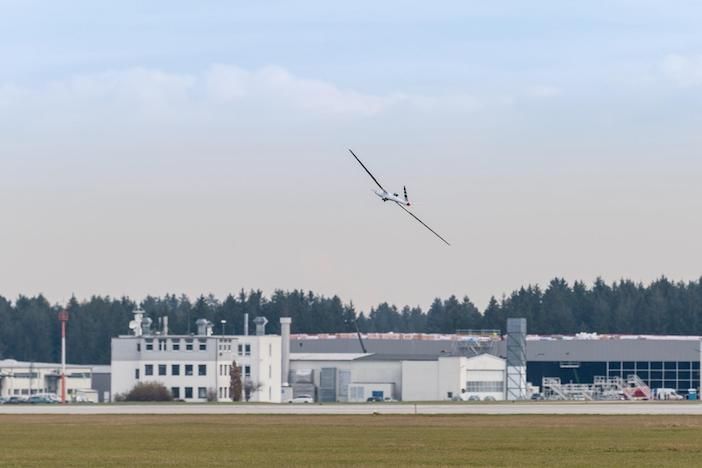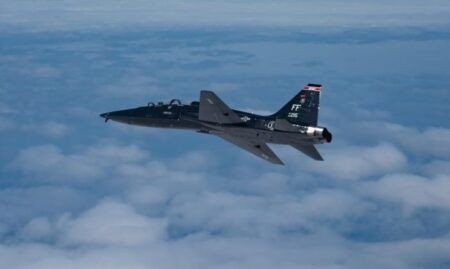Engineers in Germany have successfully flown a new aeroelastic aircraft wing that they say will make flight more environmentally friendly and cheaper.
The researchers from the German Aerospace Center (Deutsches Zentrum für Luft- und Raumfahrt; DLR) and the Technical University of Munich (TUM) are working on developing lighter yet more stable wings by controlling the flutter they experience while in flight as part of the European Flutter Free FLight Envelope eXpansion for ecOnomical Performance improvement (FLEXOP) project.
The aeroelastic wings, which made their first flight on November 19 at Oberpfaffenhofen airport in Germany have a longer span, lower weight and generate less drag, making them more energy efficient. More efficient lift reduces fuel consumption, in turn reducing emissions and costs.
Flutter is when wing oscillations become stronger and stronger due to drag and wind gusts, like a flag flying in a strong wind. Sebastian Köberle, a researcher at the TUM Institute of Aircraft Design said, “Flutter causes material fatigue and can even lead to the failure of the wing attachment to the fuselage.”
Although any wing will begin to flutter at sufficiently high speed, shorter and thicker wings have greater structural stiffness, and hence greater stability. Building wings with longer spans that are just as stable and stiff would make them much heavier.
Wings that avoid wind
The TUM researchers are carrying out the flight tests for two new wings, the 3.5m aeroelastic wing and the 7m-wide flutter wing.
The aeroelastic wing, which has been flown for the first time as part of the FLEXOP project was built using carbon-fibre reinforced composites by DLR researchers in Göttingen, Germany, in partnership with the Delft University of Technology. The researchers have aimed to influence the wing’s bending and torsional behaviour through a special alignment of the fibres during the construction of the wing. “When the wing is bent by aerodynamic forces, it rotates simultaneously and thereby reduces airflow-induced loads,” said Wolf-Reiner Krüger, from the DLR Institute of Aeroelasticity in Göttingen.
The TUM researchers worked in advance to have the flight demonstrator automatically fly predefined flight test patterns, devising the optimum settings and developing manuals and checklists for the flight tests. “The flight demonstrator has to fly fast enough with the new wings that they would theoretically have to flutter,” said Köberle. “We have to be sure that nothing goes wrong at such high speeds.
“The aircraft must remain visible from the ground, so that the researchers can intervene at any time. This means that the flight manoeuvres are flown within one kilometre of the ground control station. The extensive test flights followed completion of complex preliminary work.
“Everything worked out as we imagined it would,” Köberle added. “Now we will begin evaluating the data.”
Active damper control for the flutter wing
The flutter wing developed by TUM for the project is made of fibreglass. If fluttering occurs, the outermost flaps are extended and act like dampers.
“The active flap control developed at DLR considerably increases the possibilities for a much lighter design,” said Gertjan Looye, from the DLR Institute of System Dynamics and Control in Oberpfaffenhofen, which manages DLR’s share of the project.
A second flight control system for the flutter wing is being developed by the Computer and Automation Research Institute of the Hungarian Academy of Sciences (MTA SZTAKI). Project manager Bálint Vanek from MTA SZTAKI said, “Such a wing would make it possible to transport 20% more cargo or to reduce the required fuel by seven percent.”
The technology is complex, so tests on this wing will take place at a later date. Both variants of the flutter wing have already been evaluated during static vibration tests conducted at the DLR site in Göttingen
The next step for the wings being developed for FLEXOPS will be their testing on a flight demonstrator for transport and passenger aircraft.





